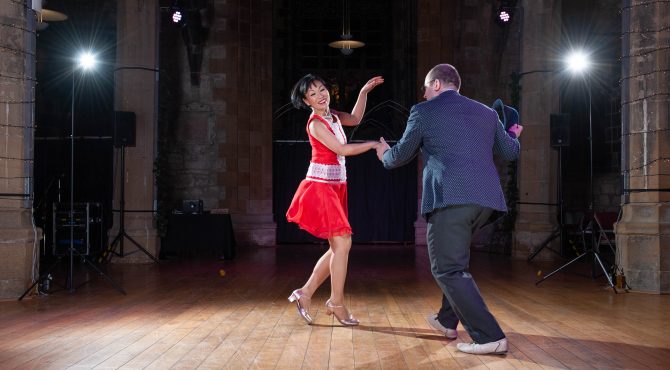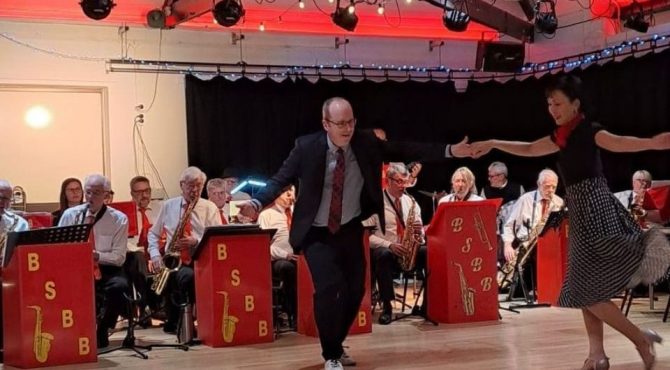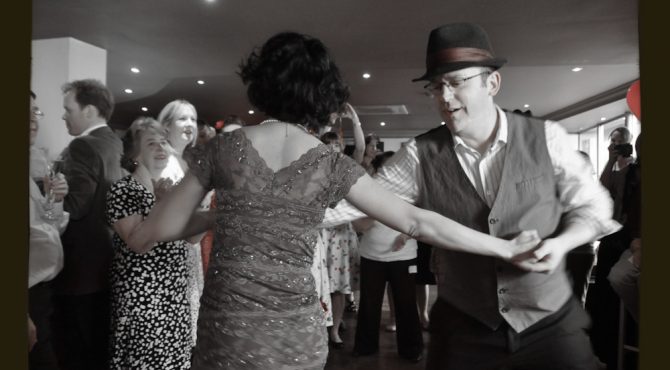Exciting News – A New Twist for Our Final Class!

We have something exciting to share with you! For a while now, we’ve been thinking about how to create a more sociable atmosphere for our social Lindy Hop classes. While the church hall is a great space with a lovely smooth floor, and our Week 6 meet ups at Fram Ferment are always fun, we want to offer you even more!
So for the final Wednesday of this course, on 9 April, we’re trying something new, and we’d love your thoughts! For our final class, we invite you to The Cartologist, a beautiful bar close to the station, where we’ll have exclusive use of their stunning Summer Room. The staff will clear the space so we can hold our usual two classes, followed by an extended Social Dancing session from 21:00-21:45—at no extra charge!
This will be a perfect chance to dance with each other, practise your moves, or just enjoy your favourite swing tunes. If you have friends who are curious about Lindy Hop or just want to soak up the atmosphere and Andy’s fantastic playlist, they’re welcome to join us too!
Good news for drivers: There’s plenty of on-street parking nearby, and it’s free after 18:00, making it even easier to join us for the evening.
Andy and I will be arriving early to have a bite to eat at 18:15, so if you fancy grabbing some food or just popping in for a chat before our classes start at 19:30, you’re more than welcome!
With the lighter evenings, we hope this will be a great opportunity for those travelling from outside Durham to stay a little longer and fully enjoy the experience. Of course, you’re free to leave at any time that suits you.
After we try this out, we’d love your feedback! Would you like this to be a special Week 6 event for future courses? Would you prefer to keep things as they are? Or could this even work as a venue for all 6 weeks of a summer course?
We want to strike the right balance between structured learning and a relaxed, social dance environment—so your input is invaluable!
We can’t wait to hear what you think and, most of all, to dance with you at The Cartologist on Week 6 – that’s 9 April.
A summary:
- This coming Wednesday 2 April is Week 5. We’re dancing at St Aidan’s as usual
- Wednesday 9 April is Week 6. We’re dancing at The Cartologist (in a private space!) and afterwards have a chat to find out everyone thinks!
Questions & Answers – Week 6 at The Cartologist
❓ Will this new format be permanent?
➡️ No, this is just a trial, mainly for the summer months.
❓ Do I have to book separately for Week 6?
➡️ No, it’s included in your course. Just turn up and enjoy!
❓ Can I bring a friend who doesn’t dance?
➡️ Yes! They’re welcome to watch, soak up the atmosphere, and enjoy the music.
❓ Will there still be a structured lesson?
➡️ Yes! We’ll run our usual two classes before the social dancing.
❓ Is there parking nearby?
➡️ Yes, plenty of on-street parking, free after 18:00.
❓ Do I have to stay for the social dancing?
➡️ Not at all—stay as long as you like!
❓ Could this be a venue for future courses?
➡️ That depends on feedback. Nothing is fixed yet. So, let’s check it out and talk about it. We’d love to hear your thoughts!
Let us know if you have any other questions! 😊
Booked up for the next course? Click here.


